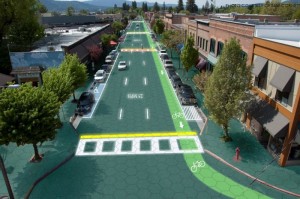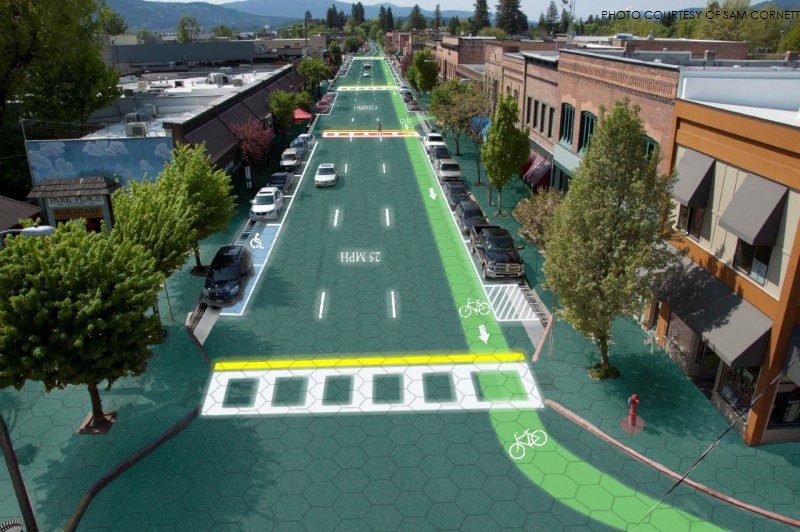
Solar Roadways, what is that, how is it possible, and could it sustainably replace concrete and tar paved roads across the country? The answers, courtesy of co-creators Julie and Scott Brusaw.
Solar Roadways are tempered recycled hexagonal glass panels connected to a circuit board processor, which is connected to a larger underground fiber optic network. These panels have the capacity to not only heat roadways under bad weather conditions, but generate electricity as the glass panels absorb sunlight and process the electricity with solar power.
To your average environmental activist, this sounds like a rather oversimplified application of real technology to solve complicated problems, but is it?
Together, the Brusaw’s have over 25 years of experience in fields of technological development, Scott in electrical engineering and Julie as “a counselor (MA LCPC LMFT) in private practice”. Scott Brusaw “has worked in the [electrical] engineering field for over 25 years and his main fields of expertise are in hardware, firmware, and software”. The Brusaw’s have obtained two contracts with the Federal Highway Administration to create prototype models for Solar Roadways, and have recently created an entire parking lot prototype to display its potential for real world application.
As unbelievable as it may seem, these panels have been under modification and large scale construction for almost ten years. The Brusaw’s youtube video explains common concerns people would have with Solar Roadways replacing regular roads in a simplistic presentation that children could grasp.
Which is an intelligent tactic to use to teach the next generation of drivers and skeptics, as the Busaw’s intend to do, about the potential for roadways which are clean, green, and energy efficient.
The Brusaw’s cannot however, simply carry out this ingenious road design with government grants. Through the kickstarter-esque website indiegogo.com, the Brusaw’s have reached beyond their million dollar goal. In less than four days, over $600,000 was raised to meet the Brusaw’s goal of one million by the end of May.
Solar Roadways did not receive as much attention initially as their first prototype was created in 2006, before a significant social media boom could support such an idealistic and revolutionary idea.
It is clear that Solar Roadways now has the social media platform to create significant change.
Concerns regarding Social Roadways remain as to whether or not one million dollars will make a significant enough dent in the Brusaw’s research and development endeavors, economic implications and potential safety-effectiveness in the event of catastrophic weather.
In response to these concerns, the Brusaw’s have remained adamant that funding will be the means to test their prototypes and transcend possible safety kinks. More jobs will be created, they also argue, in managing their fiber optic cable or maintenance systems than will be taken away in the construction of roads and power lines.
As is the nature of all roadways, Solar Roadways will only be able to succeed if drivers are willing to function within its system, a system which is far smarter and more complex than your average sidewalk. A system which has encouraging job prospects to future generations of engineers with disciplines in math and science.
One does not have to be an engineer, however, to help the Brusaw’s Solar Roadways take off; spreading the word of their environmental breakthrough and contributing to their campaign on indiegogo.

Leave a Reply